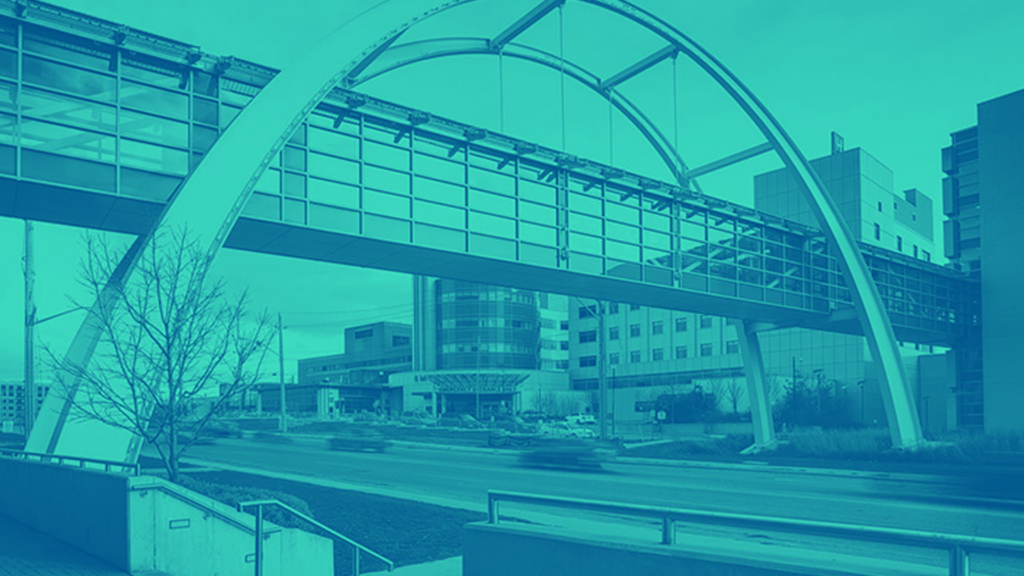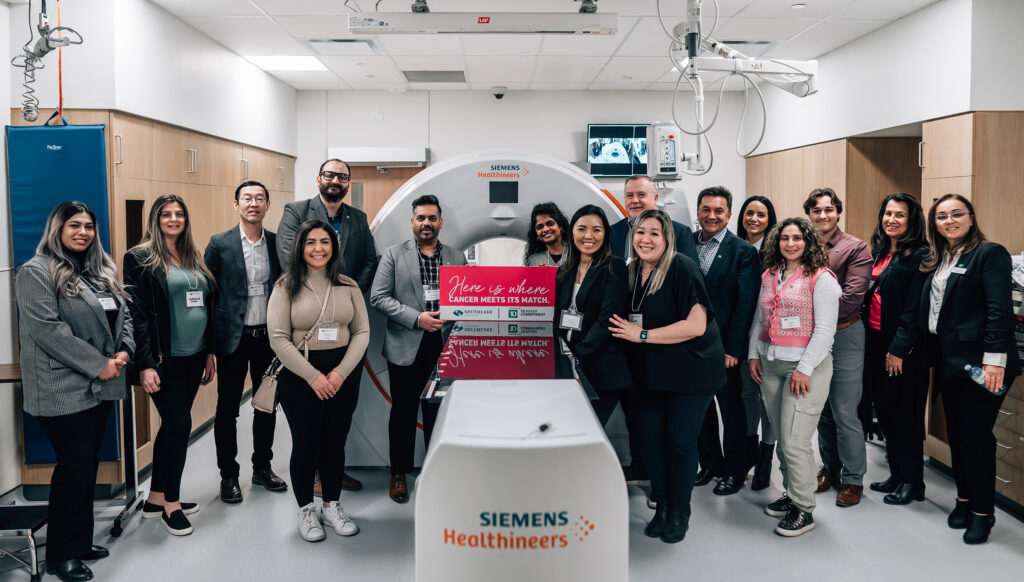When Sandra Divalentin, Creative Services and Multimedia Supervisor at Southlake, woke up on the morning of June 11, 2021, she immediately knew something was very wrong.
“I shot out of bed and I just felt this heavy pressure on my chest,” she said. “Like someone was sitting on me.”
Sandra immediately called 9-1-1 and although Southlake wasn’t the closest hospital to where Sandra lives in Richmond Hill, York Region paramedics rushed her to the Regional Cardiac Care Program at Southlake. Thankfully they did; every minute counts for patients experiencing a heart attack.
Dr. Warren Cantor and a team of nurses were waiting for Sandra to arrive. They were able to quickly perform a coronary angiogram to diagnose Sandra, a procedure where tubes are inserted from the wrist to the heart. Dye is then injected to show what and where the problem is.
The team immediately recognized that Sandra wasn’t having a regular heart attack, she was having a spontaneous coronary artery dissection (SCAD). A tear in one of the arteries in Sandra’s heart was causing a blockage. Dr. Cantor and the team then performed an emergency coronary angioplasty, which saved Sandra’s life.
“A SCAD is often misclassified as a regular heart attack, but we’re recognizing more and more that this can happen,” says Dr. Cantor. “Sometimes it will heal on its own and you don’t need to do anything about it, but in Sandra’s case her artery was completely blocked so she needed an immediate procedure.”
If Sandra hadn’t been able to undergo a coronary angioplasty so quickly, she could have had a much larger heart attack, which could have been fatal or caused further complications. Dr. Cantor and the team were able to use a balloon to restore blood flow to that artery, allowing it to heal on its own.
Dr. Cantor says Southlake performs 5-10 angioplasty procedures on patients experiencing a heart attack every day, but with SCAD they may see one a month, so it is much more rare. He says Sandra calling 9-1-1 so quickly was exactly the right thing to do.
“We sometimes have people try to drive themselves or have their spouse drive them,” says Dr. Cantor. “Heart attacks need to be treated quickly and an ambulance is the quickest way to get the care that is needed. There is also a risk of becoming unstable on the way to the hospital and paramedics can help stabilize heart attack patients.”
Southlake was the first hospital in the Greater Toronto Area and one of the first in Ontario to have what Dr. Cantor calls a STEMI (ST-Elevation Myocardial Infarction) network, where paramedics are able to diagnose a heart attack caused by 100% blockage of a coronary artery in the ambulance. They will then bring the patient directly to a regional cardiac hub like Southlake, which is equipped to perform the innovative and complex procedure required to clear the blockage.
By enabling rapid diagnosis and facilitating an immediate transfer to Southlake, heart attack patients can get urgent treatment faster and will suffer less damage to the heart, reducing long-term complications.
“I was initially shell-shocked when they brought me in, since I’ve never experienced anything like this before. But Dr. Cantor was so patient explaining what was happening, and the nurses were so helpful, it really eased me,” says Sandra. “I remember one nurse started singing to the music that was playing in the room and it really brought down my anxiety. I instantly felt more relaxed, like it was routine for them. They knew what they were doing and I felt like I was in good hands.”
Sandra was so grateful for the amazing care she received, and says that ultimately it was a great experience for her as she works at Southlake and was able to see firsthand the leading edge care that we provide to our patients.
“When you’re scared like that you want to feel like the staff here are comfortable with the procedure. We want to help the patient to relax even though it’s an emergency,” says Magdolna Toth, RN in Southlake’s Cath Lab, and one of the nurses in Sandra’s procedure. “It’s really nice to know we made an impact on Sandra and she had a positive experience. I’m so happy to hear she felt comfortable. It’s nice to hear that afterwards – it’s so important to us, too.”
Sandra is also grateful to RN Susan Varughese, who was also in her procedure, and her nurses Megan Wight and Paul So in the cardiac recovery unit.
SCAD most commonly affects women in their 40s and 50s, though it can occur at any age and can also occur in men. People who have SCAD often don’t have traditional risk factors for heart disease, such as high blood pressure, high cholesterol or diabetes, but may have recently given birth, have fibromuscular dysplasia (FMD) or other conditions affecting blood vessels. The causes are largely unknown, though more research is being done. Sandra is now part of a research registry at Sunnybrook Health Sciences Centre to learn more about SCAD and its causes.

